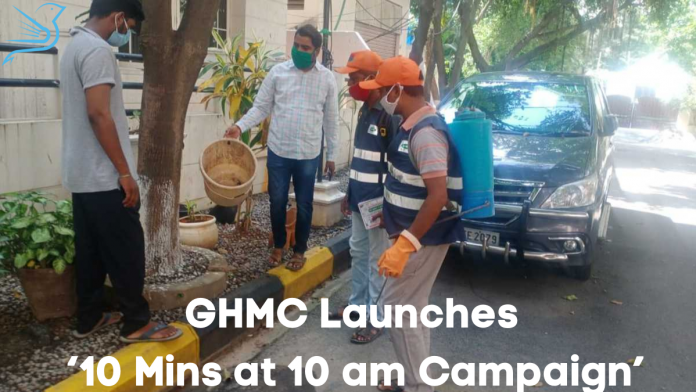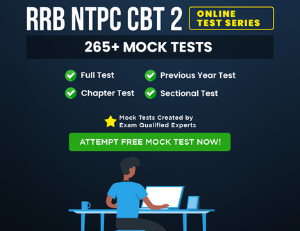Hello People!
In this blog we will talk about the initiative taken by Greater Hyderabad Municipal Corporation (GHMC) against vector borne diseases like malaria and dengue.
Let us start by knowing about this initiative
10 mins 10 am campaign – Key Highlights
- G Vijayalakshmi, the mayor of Hyderabad, formally inaugurated the campaign on 22nd August by eliminating all mosquito breeding sources at her camp office.
- Vector control activities will be carried out for 10 minutes every day at 10 a.m. as part of the campaign in various locations.
- It’s a ten-week programme to raise public awareness about the importance of eradicating mosquito larvae and their breeding grounds, such as planters, old tyres, and garbage bottles.
- As part of the initiative, stagnant water in containers will be emptied in homes and offices as they could turn into mosquito breeding spots.
- The employees of the civic body will emphasize to the public the need of emptying stagnant water in order to prevent disease.
- The drive will include public officials, corporate executives, colony welfare associations, and non-governmental organizations (NGOs).
Symptoms similar to COVID-19 – A Concern
A huge jump in dengue cases has been reported in the city. With focus currently on Covid-19 and symptoms of dengue being similar, health officials are worried about mission cases and misdiagnosis.
Hyderabad and Khammam are seeing highest cases of dengue while Kothagudem and Mulugu are reporting the maximum number of malaria cases currently.
Initiatives taken by Hyderabad
The civic body carried out a number of activities, including identifying disease hot spots, spraying larvicides with drones, and installing Mosquet machines.
In addition, the GHMC installed six mosquito trap devices, one in each zone, to determine mosquito population and species identification.
Based on the data, information, education and communication (IEC) campaigns, anti-larval activities and fogging were being taken up.
Disease eradication programmes under Union Health Ministry
The Government is implementing 3 (three) disease eradication programmes namely, National Vector Borne Diseases Control Programme (NVBDCP), National Leprosy Eradication Programme (NLEP) and National TB Elimination programme (NTEP).
Under National Vector Borne Diseases Control Programme (NVBDCP), 3 diseases namely Malaria, Filaria & Kala-Azar are under elimination programme. These diseases are targeted for elimination, and not for eradication.
Malaria:
To eliminate malaria in India in a progressive way, the government has created the National Framework for Malaria Elimination (NFME), 2016-2030. The goal is to achieve zero indigenous cases of Malaria in the country by 2027 and to sustain elimination by 2030.
According to the National Malaria Elimination Strategy (NFME), the country’s States/UTs are split into three categories for malaria elimination.
15 low burden states (category 1)
11 moderate burden states (category 2)
10 high burden states (category 3)
WHO World Malaria Report: India’s Analysis
- India is the only country with a significant endemic population that saw a decrease of 17.6% in 2019 compared to 2018.
- In comparison to 2018, the Annual Parasite Incidence (API, the number of new infections per 1000 people) decreased by 18.4 percent in 2019.
- India has also contributed to reducing the number of cases in the region, from approximately 20 million to around 6 million.
- The percentage drop in the malaria cases was 71.8% and deaths were 73.9% between 2000 and 2019.
- The percentage drop in the malaria cases was 71.8% and deaths were 73.9% between 2000 and 2019.
The figures and trends between the last two decades clearly show the drastic decline in malaria, hence the malaria elimination target of 2030 looks achievable.
Telangana is close to eliminating malaria by 2025. From 2017 when the state reported 2,688 cases the numbers have come down to 1,709 in 2019 and in 2020 authorities reported 872 cases. While there is risk of transmission in a few remote areas of Telangana, the state is progressing well on the eradication front.
Stay tuned with hrnaker.com for more such content.




